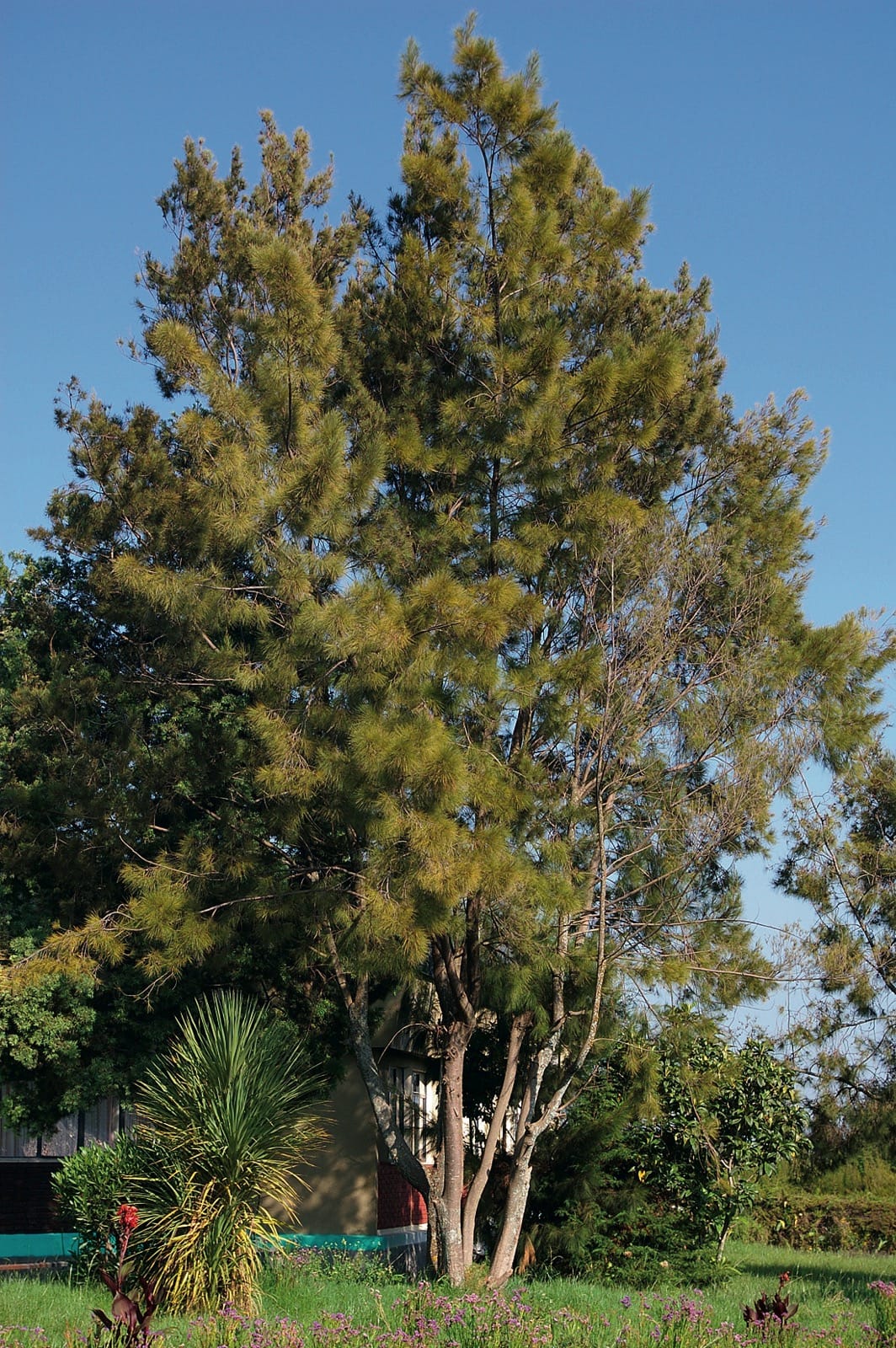Casuarina
Credits
Article from New Trees by John Grimshaw & Ross Bayton
Recommended citation
'Casuarina' from the website Trees and Shrubs Online (treesandshrubsonline.
Family
- Casuarinaceae
Common Names
- She-oaks
- Horsetail Trees
Casuarina has 17 species, ranging from Myanmar through southeastern Asia to Australia and the Pacific islands. Their articulated stems are reminiscent of Equisetum L., resulting in the colloquial name ‘horsetail tree’. The name ‘she-oak’ refers to the supposed similarity of the wood to that of true oaks (Quercus), the wood of Casuarina being said however to be of inferior strength (Wilson & Johnson 1989). The morphology of Casuarina is very similar to that of Allocasuarina, but Casuarina ‘cones’ have bracteoles that extend well beyond the cone body and lack a dorsal protuberance. They have 5–20 teeth per whorl, and the samaras are grey or yellowish brown and dull. In addition, all Casuarina species are trees, and most are dioecious though a few are monoecious (Wilson & Johnson 1989, 1990, Xia et al. 1999). For further detail, see the description of Allocasuarina (p. 131).
That it should seem feasible to attempt to grow Casuarina in our area is an indicator both of the warmer temperatures currently being experienced and also of the boldness of gardeners and dendrologists prepared to try to grow any species of tree that comes their way. While C. equisetifolia is a familiar tropical coastline species, Casuarina is by no means always littoral, and different species occupy a diversity of habitats ranging from riverside forest in damp alluvial soils to dry woodland on sand. Propagation is by seed, but cuttings are also an option. In all cases it is important to plant out the young trees as soon as possible to prevent root problems, and they will benefit from light feeding if planted in nutrient-poor soil (Elliot & Jones 1982).
In addition to the two species described below, Johnson (2007) mentions that C. glauca Spreng. is grown in the grounds of Buckingham Palace, London. The other species he lists under Casuarina are referrable to Allocasuarina. The long-term persistence of any Casuarina in our area away from the San Francisco Bay Area, where several taxa are grown, may be open to question, but their rapid growth and curious appearance make them well worth the attempt if conditions seem reasonable.

